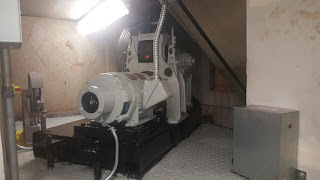Last week I was able to attend the NAEC’s strategic
planning session in Asheville, NC.
[Sunday dinner before the meeting started and a toast by our current president]
Every 3 to 5 years the Association gets previous, present
and future board members together to map out the strategic direction of the
association. A survey went out to
membership a few months before our meeting to find out what needs the
membership has currently and what needs they believe they will have in the
future. The next step is at the meeting and includes reviewing survey results
of member ship and throwing up ideas to meet the present and future need.
[Day one of the two day planning session.]
While I have been on the board for 2 years, I am the
youngest board member. While I have been
involved in the elevator industry for around 20 years, there are many people
with much more experience and knowledge than I have. I understood that when you get a group of
motivated and competitive people who run and managed their own businesses or
business units it may get crowded. The gravity of the knowledge and experience
of my counterparts hit me Monday morning when we got down to business. During the first breakout session, I was in a
group with a few people that had twice the amount of contractor experience, 2
to 4 times NAEC experience and had a big presence during discussions. I learned a lot from my interactions with
these individuals and was very impressed with my counter parts.
During the next two days we took 50+ pages of data and 22
people’s contributions on how to serve the immediate needs as well as future
needs of NAEC membership and boiled it down to something tangible.
The implementation time lines for these big ideas ranged from now to 10
years from now. While I had been a part
of a similar process it is amazing how the ideas shake out from data to ideas
to implementation strategies.
The brilliance of the process was taking all of our big,
motivated personalities and capturing the strengths and knowledge that comes
from different parts of the elevator business[Contractors & suppliers from
California to Florida to New York and everywhere inbetween] and focusing it to transform a massive
amount data into actionable items. One
of the keys of this successful exercise was that we had a great facilitator who
could keep us on track and harness our energy.
During the last few hours on the 2nd day
everyone was running out of steam as this process is challenging. What we came up with during these two days
was 10 big ideas and the back end strategies how to accomplish these big
ideas. As I reflect on the experience on
my 2nd flight of the day to get back to Chicago I am very satisfied
with our results and believe it is a good path for the association for many
years to come.
Frequently, I get asked what do I get out of being a part
of the NAEC Board of Directors. This last few days was a reminder that every time I
am involved in these activities, I learn from the process but I learn more from
the people. The NAEC is fortunate to have
such great contributors and I am fortunate to have been asked to be one of
them.
As
always feel free to contact us at www.colleyelevator.com,
email Craigz@colleyelevator.com or call 630-766-7230.













